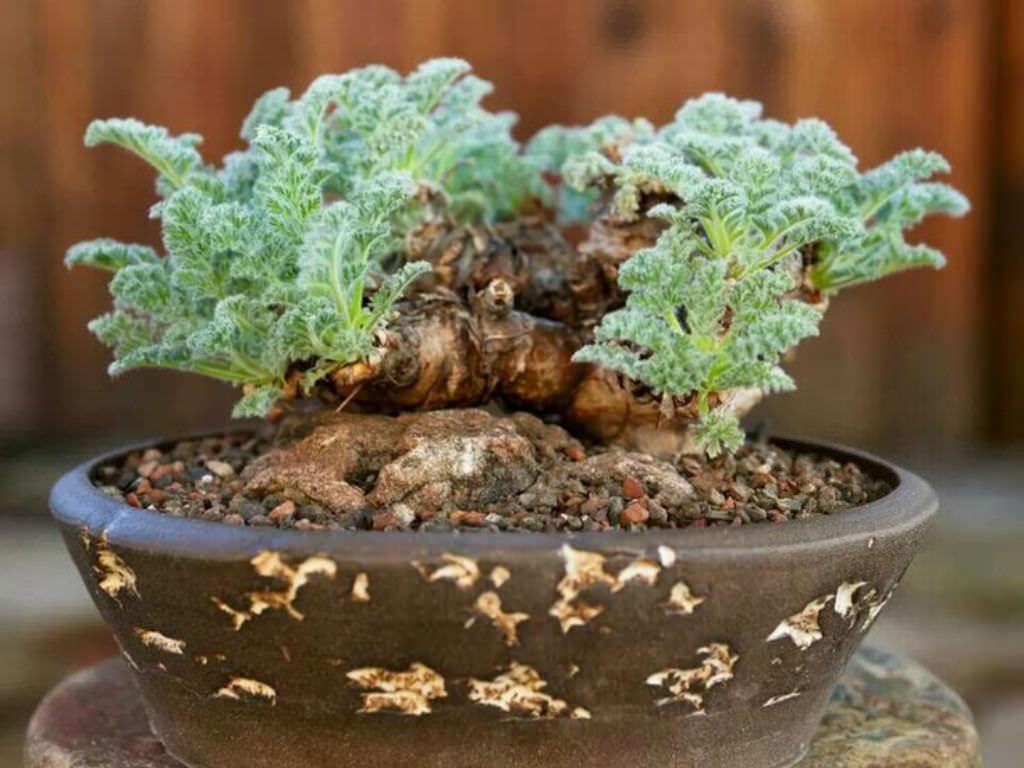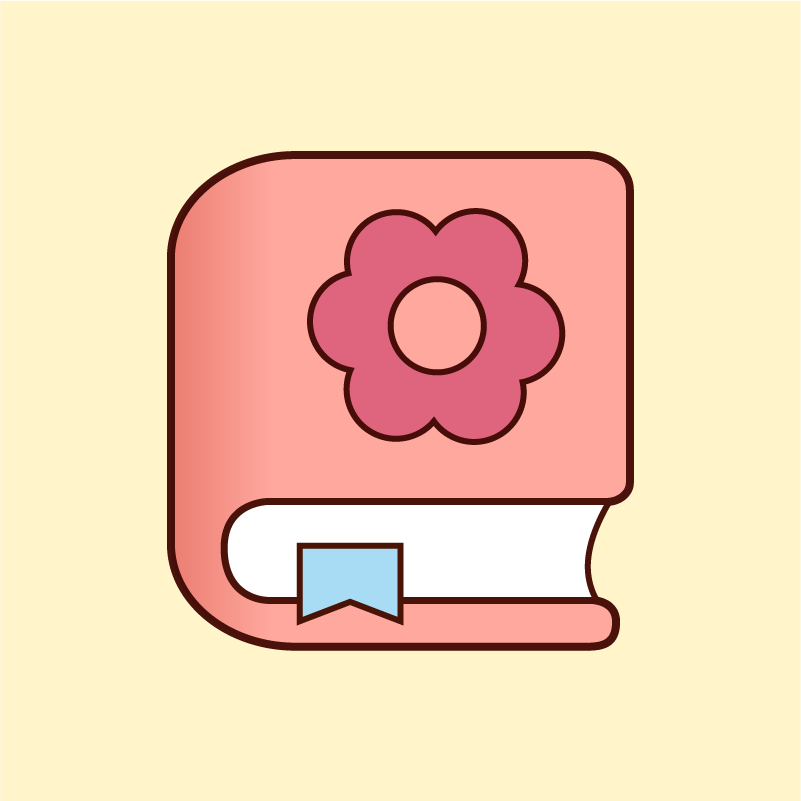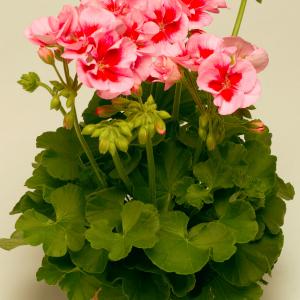文章
Dummer. ゛☀
2017年09月28日

The odds are that the lush, potted Geraniums brightening your patio are not True Geraniums (Geranium sp.); the nursery plants sold as Geraniums are actually of the genus Pelargonium. While True Geraniums are frost-hardy perennials generally planted in flower beds, Pelargoniums are often container plants and, although also perennials, require more care in cold temperatures. Easy-going, versatile plants, they add a splash of vibrant color throughout the summer season in pots, hanging baskets and window boxes in Mediterranean climates.
Growing Conditions and General Care
Work organic compost into high-quality container potting soil that contains ingredients such as peat moss, vermiculite and perlite. Use this compost/soil mixture to fill pots for your Pelargoniums. Good drainage is essential to Pelargoniums so choose containers with adequate drainage holes. If your Pelargoniums are already in pots, spread organic compost lightly on the soil surface and work in, taking care not to dig up the plant’s roots.
Choose locations getting direct sun for most Pelargoniums. They need at least six hours of sun daily. Martha Washington and Regal types prefer a site that is shady in the afternoon. All Pelargoniums need afternoon shade if your area regularly sees summer temperatures exceeding 90 degrees Fahrenheit (32 degrees Celsius).
Feed your Pelargoniums every two weeks with a balanced fertilizer like 10-10-10 or 20-20-20. Buy fertilizer that dissolves in water for easier application. Every third watering, add Epsom salts — magnesium sulfate — to the plant water — 1 teaspoon per 1 gallon — to provide magnesium. Or, add a slow-release fertilizer to the soil mix when you plant the geraniums in the pot — it feeds them all season.
Water your potted Pelargoniums until the excess runs out the drainage holes, then allow the potting soil to dry before watering again. In hot summer temperatures, poke a finger 2 inches (5 cm) into the soil in the container every day and get out the watering can if the soil is dry. Water plants in the morning instead of evening to reduce disease.
Snip off the faded flowers of potted Pelargoniums. Deadheading your plants helps them produce new flowers more rapidly. At the same time, trim stems by one-third to encourage branching. Pinch off dead and discolored leaves.
Cut back your Pelargoniums by about two-thirds if and when the weather drops below 45°F (7°C). Move the pots indoors to a sunny, south-facing window that gets at least four hours a day of direct sun. Stop fertilizing and limit water to once a week, keeping the plants on the dry side, while they are in the house. Begin to add fertilizer to the plant water again when you see new growth in late winter or early spring. As spring arrives, move your potted Pelargoniums outside gradually, adding a little more time each day to allow them to acclimate to cooler air.
Grower’s Tips
True Pelargoniums are cold-hardy and drought tolerant. Different cultivars do well in sun or shade. Most need afternoon shade in hot climates.
Put Pelargonium containers in a cemented-over backyard area, if you have one. The flowers mask the cement and flourish from the extra warmth of reflected sun.
Make your backyard garden different each year by rearranging your container plants in new and exotic ways. Try new plant combinations and change to larger containers. Experiment with Ivy Geraniums (Pelargonium peltatum). This fast-growing, trailing geranium grows year-round in Mediterranean climates.
Try Scented Geraniums for their lovely smells, including rose, lemon and mint. Pick and dry their fragrant leaves as a welcome addition to potpourri.

Growing Conditions and General Care
Work organic compost into high-quality container potting soil that contains ingredients such as peat moss, vermiculite and perlite. Use this compost/soil mixture to fill pots for your Pelargoniums. Good drainage is essential to Pelargoniums so choose containers with adequate drainage holes. If your Pelargoniums are already in pots, spread organic compost lightly on the soil surface and work in, taking care not to dig up the plant’s roots.

Choose locations getting direct sun for most Pelargoniums. They need at least six hours of sun daily. Martha Washington and Regal types prefer a site that is shady in the afternoon. All Pelargoniums need afternoon shade if your area regularly sees summer temperatures exceeding 90 degrees Fahrenheit (32 degrees Celsius).
Feed your Pelargoniums every two weeks with a balanced fertilizer like 10-10-10 or 20-20-20. Buy fertilizer that dissolves in water for easier application. Every third watering, add Epsom salts — magnesium sulfate — to the plant water — 1 teaspoon per 1 gallon — to provide magnesium. Or, add a slow-release fertilizer to the soil mix when you plant the geraniums in the pot — it feeds them all season.

Water your potted Pelargoniums until the excess runs out the drainage holes, then allow the potting soil to dry before watering again. In hot summer temperatures, poke a finger 2 inches (5 cm) into the soil in the container every day and get out the watering can if the soil is dry. Water plants in the morning instead of evening to reduce disease.
Snip off the faded flowers of potted Pelargoniums. Deadheading your plants helps them produce new flowers more rapidly. At the same time, trim stems by one-third to encourage branching. Pinch off dead and discolored leaves.

Cut back your Pelargoniums by about two-thirds if and when the weather drops below 45°F (7°C). Move the pots indoors to a sunny, south-facing window that gets at least four hours a day of direct sun. Stop fertilizing and limit water to once a week, keeping the plants on the dry side, while they are in the house. Begin to add fertilizer to the plant water again when you see new growth in late winter or early spring. As spring arrives, move your potted Pelargoniums outside gradually, adding a little more time each day to allow them to acclimate to cooler air.

Grower’s Tips
True Pelargoniums are cold-hardy and drought tolerant. Different cultivars do well in sun or shade. Most need afternoon shade in hot climates.
Put Pelargonium containers in a cemented-over backyard area, if you have one. The flowers mask the cement and flourish from the extra warmth of reflected sun.
Make your backyard garden different each year by rearranging your container plants in new and exotic ways. Try new plant combinations and change to larger containers. Experiment with Ivy Geraniums (Pelargonium peltatum). This fast-growing, trailing geranium grows year-round in Mediterranean climates.

Try Scented Geraniums for their lovely smells, including rose, lemon and mint. Pick and dry their fragrant leaves as a welcome addition to potpourri.
0
0
文章
Dummer. ゛☀
2017年09月19日

Pelargonium is a genus of flowering plants native to southern Africa and Australia, which includes about 200 species, commonly known as Geraniums (in the United States also Storksbills). Confusingly, Geranium is the botanical name (and also common name) of a separate genus of related plants often called Cranesbills. Both genera belong to the family Geraniaceae. Linnaeus originally included all the species in one genus, Geranium, and they were later separated into two genera by Charles L’Héritier in 1789.
Pelargonium occurs in a large number of growth forms, including herbaceous annuals, shrubs, subshrubs, stem succulents and geophytes. The erect stems bear five-petaled flowers in umbel-like clusters, which are occasionally branched. Leaves are usually alternate, and palmately lobed or pinnate, often on long stalks, and sometimes with light or dark patterns.
Some species are true succulents with water- storage tissues in the steams, a few species even appear to have succulent leaves, some are underground geophytes.
Growing Conditions and General Care
Most Pelargoniums are grown in pots in a green house or conservatory. They can also be grown inside the house, but need to be in the most sunniest area possible.
Many species do well when they are planted outside in an open area, so that they can become larger plants. This can be a problem though if you want to replant them in a pot for the winter months. Cuttings can be taken in the summer time instead to make new plants.
Succulent species grow well with other succulents and cacti. Pelargonium are very attractive and one of the toughest and most durable succulents.
Pelargoniums main requirement is a warm, sunny, sheltered location. Many species will tolerate drought conditions for short periods. They will show you when they wants water by producing a crop of new leaves, almost all species are winter growers. After the summer you can wait until the plant begins to grow, but you can also give them lights spryings or shower to stimulate their growth, when they are in full leaves they like water, but as always keep the soil dry out between waterings. Overwatering can cause unnatural growth.

Pelargonium occurs in a large number of growth forms, including herbaceous annuals, shrubs, subshrubs, stem succulents and geophytes. The erect stems bear five-petaled flowers in umbel-like clusters, which are occasionally branched. Leaves are usually alternate, and palmately lobed or pinnate, often on long stalks, and sometimes with light or dark patterns.
Some species are true succulents with water- storage tissues in the steams, a few species even appear to have succulent leaves, some are underground geophytes.

Growing Conditions and General Care
Most Pelargoniums are grown in pots in a green house or conservatory. They can also be grown inside the house, but need to be in the most sunniest area possible.
Many species do well when they are planted outside in an open area, so that they can become larger plants. This can be a problem though if you want to replant them in a pot for the winter months. Cuttings can be taken in the summer time instead to make new plants.

Succulent species grow well with other succulents and cacti. Pelargonium are very attractive and one of the toughest and most durable succulents.
Pelargoniums main requirement is a warm, sunny, sheltered location. Many species will tolerate drought conditions for short periods. They will show you when they wants water by producing a crop of new leaves, almost all species are winter growers. After the summer you can wait until the plant begins to grow, but you can also give them lights spryings or shower to stimulate their growth, when they are in full leaves they like water, but as always keep the soil dry out between waterings. Overwatering can cause unnatural growth.
0
0
文章
Dummer. ゛☀
2017年08月26日

Also known as Prince of Orange scented geranium (Pelargonium x citriodorum), Pelargonium ‘Prince of Orange,’ doesn’t produce big, striking blooms like most other geraniums, but the delightful scent more than makes up for the lack of visual pizzazz. As the name indicates, Prince of Orange pelargoniums are scented leaf geraniums that exudes the warm aroma of citrus. Want to try your hand at growing Prince of Orange pelargoniums? Growing Prince of Orange geraniums isn’t difficult, as you’re about to find out!
Prince of Orange Flower Info
Although they may not be flashy, Prince of Orange scented geraniums have plenty to offer with glossy foliage and clusters of pale pinkish-lavender flowers marked with purple veins. Blooming usually continues throughout growing season. Prince of Orange pelargoniums are perennial in USDA plant hardiness zones 10 and 11, and may survive zone 9 with winter protection. In cooler climates, Pelargonium Prince of Orange is grown as an annual.
Growing Prince of Orange Geranium Plants
Although Prince of Orange geranium is adaptable to most types of well-drained soil, it thrives in soil with a slightly acidic pH. You can also plant Prince of Orange pelargoniums in a container filled with a high quality potting mixture. Water in-ground pelargonium whenever the top 1 to 2 inches of soil feel dry to the touch. Pelargonium is relatively forgiving, but the soil should never be bone dry. On the other hand, plants in waterlogged soil are susceptible to root rot, so strive for a happy medium. Keep a close eye on Pelargonium Prince of Orange grown in containers and check the plants daily during hot weather, as potting soil dries much more quickly. Water deeply whenever the soil feels dry, then let the pot drain thoroughly. Water Prince of Orange scented geranium at the base of the plant, using a garden hose or watering can. Avoid overhead watering if possible, as damp foliage is more susceptible to rot and other moisture-related diseases.
Fertilize Prince of Orange pelargoniums every four to six weeks, using a general-purpose, balanced fertilizer. Deadhead flowers as soon as they wilt to encourage formation of new buds. Cut back side stems if Prince of Orange pelargoniums look straggly during late summer.

Prince of Orange Flower Info
Although they may not be flashy, Prince of Orange scented geraniums have plenty to offer with glossy foliage and clusters of pale pinkish-lavender flowers marked with purple veins. Blooming usually continues throughout growing season. Prince of Orange pelargoniums are perennial in USDA plant hardiness zones 10 and 11, and may survive zone 9 with winter protection. In cooler climates, Pelargonium Prince of Orange is grown as an annual.

Growing Prince of Orange Geranium Plants
Although Prince of Orange geranium is adaptable to most types of well-drained soil, it thrives in soil with a slightly acidic pH. You can also plant Prince of Orange pelargoniums in a container filled with a high quality potting mixture. Water in-ground pelargonium whenever the top 1 to 2 inches of soil feel dry to the touch. Pelargonium is relatively forgiving, but the soil should never be bone dry. On the other hand, plants in waterlogged soil are susceptible to root rot, so strive for a happy medium. Keep a close eye on Pelargonium Prince of Orange grown in containers and check the plants daily during hot weather, as potting soil dries much more quickly. Water deeply whenever the soil feels dry, then let the pot drain thoroughly. Water Prince of Orange scented geranium at the base of the plant, using a garden hose or watering can. Avoid overhead watering if possible, as damp foliage is more susceptible to rot and other moisture-related diseases.

Fertilize Prince of Orange pelargoniums every four to six weeks, using a general-purpose, balanced fertilizer. Deadhead flowers as soon as they wilt to encourage formation of new buds. Cut back side stems if Prince of Orange pelargoniums look straggly during late summer.
0
0
文章
Dummer. ゛☀
2017年08月26日

Scented geraniums (Pelargoniums) are tender perennials, available in delightful scents like spice, mint, various fruits and rose. If you love scented geraniums, you can easily multiply your plants by rooting pelargonium cuttings. Read on to learn more.
Propagating Scented Geraniums
Propagating scented geraniums is surprisingly easy and requires very little expense and no fancy equipment. In fact, some gardeners have good luck by simply breaking off a stem and planting it in the same pot with the parent plant. However, if you want to be more deliberate with a higher chance of success, here are simple steps for growing scented geraniums from cuttings.
How to Root Scented Geranium Cuttings
Although these adaptable plants may take root any time after spring, late summer is the optimum time for rooting pelargonium cuttings. Cut a stem from a healthy growing plant using a sharp, sterile knife. Make the cut just below a leaf joint. Remove all the leaves except the top two. Also, remove any buds and flowers from the stem. Get a small pot with a drainage hole. A 3-inch pot is fine for a single cutting, while a 4- to 6-inch pot will hold four or five cuttings. Fill the pot with regular potting mix or seed starter. Avoid mixes with added fertilizer.
Water the potting mix well, then set it aside to drain until the mix is evenly moist but not soggy or dripping wet. Plant the cutting in the damp potting mix. Be sure the top leaves are above the soil. Don’t bother with rooting hormone; it isn’t necessary. Press the potting soil lightly to remove air bubbles, but don’t compress it. Cover the pot lightly with plastic, then poke several holes in the plastic to provide air circulation. (Plastic is optional, but the greenhouse environment may speed rooting). Insert a couple of drinking straws or chopsticks to hold the plastic above the leaves. Set the pot in indirect light. Normal room temperatures are fine. You can place the pot outdoors if temperatures aren’t too hot and sunlight isn’t intense. Water the potting mix lightly after about a week, or when it feels dry. Watering from the bottom is preferable. Remove the plastic for a few hours if you notice water drops. Too much moisture will rot the cuttings. Remove the plastic permanently and transplant the cuttings into individual pots when new growth appears, which indicates the cuttings have rooted. This process may take several days or a few weeks.
Rooting Scented Geraniums in Water
Most gardeners find that rooting Pelargonium cuttings in potting mix is more dependable, but you may have good luck rooting scented geraniums in water. Here’s how: Fill a jar about one-third with room temperature water. Place a scented geranium cutting in the water. Ensure the bottom one-third of the cutting is submerged. Place the jar in a warm spot, such as a sunny window. Avoid hot, direct sunlight, which will cook the cutting. Watch for roots to develop in about a month. Then, plant the rooted cutting in a pot filled with regular potting mix.

Propagating Scented Geraniums
Propagating scented geraniums is surprisingly easy and requires very little expense and no fancy equipment. In fact, some gardeners have good luck by simply breaking off a stem and planting it in the same pot with the parent plant. However, if you want to be more deliberate with a higher chance of success, here are simple steps for growing scented geraniums from cuttings.
How to Root Scented Geranium Cuttings
Although these adaptable plants may take root any time after spring, late summer is the optimum time for rooting pelargonium cuttings. Cut a stem from a healthy growing plant using a sharp, sterile knife. Make the cut just below a leaf joint. Remove all the leaves except the top two. Also, remove any buds and flowers from the stem. Get a small pot with a drainage hole. A 3-inch pot is fine for a single cutting, while a 4- to 6-inch pot will hold four or five cuttings. Fill the pot with regular potting mix or seed starter. Avoid mixes with added fertilizer.

Water the potting mix well, then set it aside to drain until the mix is evenly moist but not soggy or dripping wet. Plant the cutting in the damp potting mix. Be sure the top leaves are above the soil. Don’t bother with rooting hormone; it isn’t necessary. Press the potting soil lightly to remove air bubbles, but don’t compress it. Cover the pot lightly with plastic, then poke several holes in the plastic to provide air circulation. (Plastic is optional, but the greenhouse environment may speed rooting). Insert a couple of drinking straws or chopsticks to hold the plastic above the leaves. Set the pot in indirect light. Normal room temperatures are fine. You can place the pot outdoors if temperatures aren’t too hot and sunlight isn’t intense. Water the potting mix lightly after about a week, or when it feels dry. Watering from the bottom is preferable. Remove the plastic for a few hours if you notice water drops. Too much moisture will rot the cuttings. Remove the plastic permanently and transplant the cuttings into individual pots when new growth appears, which indicates the cuttings have rooted. This process may take several days or a few weeks.

Rooting Scented Geraniums in Water
Most gardeners find that rooting Pelargonium cuttings in potting mix is more dependable, but you may have good luck rooting scented geraniums in water. Here’s how: Fill a jar about one-third with room temperature water. Place a scented geranium cutting in the water. Ensure the bottom one-third of the cutting is submerged. Place the jar in a warm spot, such as a sunny window. Avoid hot, direct sunlight, which will cook the cutting. Watch for roots to develop in about a month. Then, plant the rooted cutting in a pot filled with regular potting mix.
0
0
文章
Miss Chen
2017年08月14日

Half-hardy annuals, including petunias (Petunia spp.) or geraniums (Pelargonium spp.) or hardy annuals, like pansies (Viola x. wittrockiana) usually won't be adversely affected by a temperature of 32 degrees Fahrenheit. But that can depend on when they are exposed to it. Plants that have experienced a gradual cooling in fall can survive freezing better than those just planted in spring, which lack such "hardening." Still, you should cover annuals you wish to save whenever frost is forecast, as the meteorologist isn't always right about how low the temperature will go.

Protecting Petunias
Petunias can potentially be perennial in U.S. Department of Agriculture plant hardiness zones 9 through 11. Elsewhere they are considered half-hardy annuals, which means they will survive light frosts but not heavy ones. Farmers' Almanac defines a light freeze as one caused by temperatures between 29 and 32 F. Because the weather frequently warms into Indian summer after a harsher frost, you may be able to keep your petunias blooming until late fall simply by covering them whenever the temperature threatens to drop below 29 F.

Tolerant Pansies
Pansies, which grow in USDA zones 5 through 10, may droop and change color after a hard freeze -- temperatures below 25 F -- but that doesn't mean they are dying. Hardier than plants from tropical regions, they can survive around 10 F. It's a good idea to cover pansies with straw or pine straw whenever forecasts call for temperatures below 20 F, as frozen roots may cause them to die of thirst.

Keeping Geraniums Alive
Like petunias, geraniums -- potentially perennials in USDA zones 9 through 11 -- are likely to come through a light frost unscathed. Those with thick stems probably will survive a moderate freeze, with temperatures from 25 to 28 F, though it is likely to shrivel their flowers and leaves. Temperatures below 25 F will kill stem tissue too, so -- with the exception of a few of the more obscure species -- geraniums usually won't survive a hard freeze. If you intend to use yours as winter houseplants, avoid damage by moving or covering them whenever temperatures are slated to fall below 29 F.
Plant Protection
If your petunias or geraniums are growing in containers when frost threatens, move those containers to a roofed and warmer spot, such as a garage or porch, temporarily. Plants in the ground can be protected with porous "caps" such as large clay flower pots, tented newspapers and cardboard boxes.
If you have row or frost covers, you can lay them over the plants, but sheets or lightweight blankets generally will work as well. For a light frost, you can toss one of those coverings over the plants. If a moderate to hard freeze is predicted, use stakes to suspend the covering above the plants so it surrounds them on all sides without actually touching them.

Protecting Petunias
Petunias can potentially be perennial in U.S. Department of Agriculture plant hardiness zones 9 through 11. Elsewhere they are considered half-hardy annuals, which means they will survive light frosts but not heavy ones. Farmers' Almanac defines a light freeze as one caused by temperatures between 29 and 32 F. Because the weather frequently warms into Indian summer after a harsher frost, you may be able to keep your petunias blooming until late fall simply by covering them whenever the temperature threatens to drop below 29 F.

Tolerant Pansies
Pansies, which grow in USDA zones 5 through 10, may droop and change color after a hard freeze -- temperatures below 25 F -- but that doesn't mean they are dying. Hardier than plants from tropical regions, they can survive around 10 F. It's a good idea to cover pansies with straw or pine straw whenever forecasts call for temperatures below 20 F, as frozen roots may cause them to die of thirst.

Keeping Geraniums Alive
Like petunias, geraniums -- potentially perennials in USDA zones 9 through 11 -- are likely to come through a light frost unscathed. Those with thick stems probably will survive a moderate freeze, with temperatures from 25 to 28 F, though it is likely to shrivel their flowers and leaves. Temperatures below 25 F will kill stem tissue too, so -- with the exception of a few of the more obscure species -- geraniums usually won't survive a hard freeze. If you intend to use yours as winter houseplants, avoid damage by moving or covering them whenever temperatures are slated to fall below 29 F.
Plant Protection
If your petunias or geraniums are growing in containers when frost threatens, move those containers to a roofed and warmer spot, such as a garage or porch, temporarily. Plants in the ground can be protected with porous "caps" such as large clay flower pots, tented newspapers and cardboard boxes.
If you have row or frost covers, you can lay them over the plants, but sheets or lightweight blankets generally will work as well. For a light frost, you can toss one of those coverings over the plants. If a moderate to hard freeze is predicted, use stakes to suspend the covering above the plants so it surrounds them on all sides without actually touching them.
0
0
文章
玲儿
2017年08月06日

センテッドゼラニウムの基本情報
学名:Pelargonium Scented-leaved Group
その他の名前:ニオイゼラニウム、ニオイバゼラニウム
科名 / 属名:フウロソウ科 / テンジクアオイ属(ペラルゴニウム属)
特徴
センテッドゼラニウムはゼラニウムやペラルゴニウムと同じペラルゴニウム属に属し、葉に芳香をもつグループを指します。開花期は主に春から初夏ですが、一部に四季咲き性の品種もあります。普通のゼラニウムとは異なる印象をもち、花弁が細くて繊細で、野趣あふれる雰囲気が人気を呼んでいます。
代表的なローズゼラニウムのほかに、ミント、柑橘・フルーツ系、スパイス系などさまざまな香りをもつ種類があり、オイルやお菓子の香りづけに利用されます。
苗は、ハーブを扱っている園芸店や通信販売などで、多くの種類が入手できます。

種類(原種、園芸品種)
‘アトミック・スノーフレーク’
Pelargonium ‘Atomic Snowflake’
レモンを混ぜたさわやかなローズの香り。明るい緑の葉に黄色の覆輪が入り、花のない時期も楽しめる。

ローズ・ゼラニウム
Pelargonium graveolens
多くの園芸品種の作出に利用された最も代表的な原種。バラの香りがし、ゼラニウムオイルや、料理やお菓子の香りづけに利用される。
ペパーミント・ゼラニウム
Pelargonium tomentosum
葉の表面に柔らかい繊毛が生え、ビロードの質感がある。さわやかなミントの香りが特徴的。
‘レディ・スカーボロウ’
Pelargonium ‘Lady Scarborough’
ストロベリーの香り。咲き始めの花は淡いピンク色で、咲き進むにつれて濃くなり、美しい。
アップル・ゼラニウム
Pelargonium odoratissimum
ほふくしてよく繁茂する。比較的耐寒性があり、暖地では戸外で冬越しできる。花は小さい白色で目立たないが、葉はリンゴの香りがして個性的。

レモン・ゼラニウム
Pelargonium crispum
多くのレモン系の香りをもつ園芸品種のもとになった。花つきはあまりよくないが、小さい葉にピンク色のかわいい花が咲き、草姿のバランスはよい。
‘ミセス・テイラー’
Pelargonium ‘Mrs. Taylor’
スパイシーでほのかにローズの香り。鮮明な赤色の花が華やか。

学名:Pelargonium Scented-leaved Group
その他の名前:ニオイゼラニウム、ニオイバゼラニウム
科名 / 属名:フウロソウ科 / テンジクアオイ属(ペラルゴニウム属)
特徴
センテッドゼラニウムはゼラニウムやペラルゴニウムと同じペラルゴニウム属に属し、葉に芳香をもつグループを指します。開花期は主に春から初夏ですが、一部に四季咲き性の品種もあります。普通のゼラニウムとは異なる印象をもち、花弁が細くて繊細で、野趣あふれる雰囲気が人気を呼んでいます。
代表的なローズゼラニウムのほかに、ミント、柑橘・フルーツ系、スパイス系などさまざまな香りをもつ種類があり、オイルやお菓子の香りづけに利用されます。
苗は、ハーブを扱っている園芸店や通信販売などで、多くの種類が入手できます。

種類(原種、園芸品種)
‘アトミック・スノーフレーク’
Pelargonium ‘Atomic Snowflake’
レモンを混ぜたさわやかなローズの香り。明るい緑の葉に黄色の覆輪が入り、花のない時期も楽しめる。

ローズ・ゼラニウム
Pelargonium graveolens
多くの園芸品種の作出に利用された最も代表的な原種。バラの香りがし、ゼラニウムオイルや、料理やお菓子の香りづけに利用される。
ペパーミント・ゼラニウム
Pelargonium tomentosum
葉の表面に柔らかい繊毛が生え、ビロードの質感がある。さわやかなミントの香りが特徴的。
‘レディ・スカーボロウ’
Pelargonium ‘Lady Scarborough’
ストロベリーの香り。咲き始めの花は淡いピンク色で、咲き進むにつれて濃くなり、美しい。
アップル・ゼラニウム
Pelargonium odoratissimum
ほふくしてよく繁茂する。比較的耐寒性があり、暖地では戸外で冬越しできる。花は小さい白色で目立たないが、葉はリンゴの香りがして個性的。

レモン・ゼラニウム
Pelargonium crispum
多くのレモン系の香りをもつ園芸品種のもとになった。花つきはあまりよくないが、小さい葉にピンク色のかわいい花が咲き、草姿のバランスはよい。
‘ミセス・テイラー’
Pelargonium ‘Mrs. Taylor’
スパイシーでほのかにローズの香り。鮮明な赤色の花が華やか。

0
0
文章
Dummer. ゛☀
2017年08月06日

BOTANICAL NAME: Pelargonium
PLANT TYPE: Houseplant
SUN EXPOSURE: Full Sun
SOIL TYPE: Sandy
FLOWER COLOR: Multicolor
Geraniums are a longtime favorite of Almanac gardeners. They are easy to grow, colorful, and many add a lovely scent to the home. Although, they are also an outdoor plant, they can be kept indoors to overwinter. Or, they can bloom indoors all year long with enough light.
PLANTING
When buying geraniums, look for color and size. Healthy leaves will have no discoloration on or below them and stems will be sturdy, not straggly. Be sure to avoid any plants with obvious signs of pests as well.
Place plants in pots with drainage holes to avoid root rot. Do not use a saucer beneath your pot unless filled with pebbles.
Use soil-less potting mixture (not dirt) when planting in containers.
For maximum bloom, place the plants in an area where they will get 4-6 hours of sunlight daily.
CARE
Allow to dry between waterings, then water thoroughly.
During the winter water much less, but do not let the roots dry out.
To encourage blooming, deadhead spent flowers.
To promote bushiness and avoid legginess, pinch the stems.
During active growing months, fertilize every 2 weeks. Use a water-soluable fertilizer at half strength. Don’t fertilize in winter.
Geraniums can be re-potted as needed during the spring to be refreshed.
PESTS/DISEASES
Common problems can be low light or too much or too little water. The leaves will turn yellow as an indication you are watering too little or too much in which case, try to even the watering out and move the geraniums to a brighter place.
PLANT TYPE: Houseplant
SUN EXPOSURE: Full Sun
SOIL TYPE: Sandy
FLOWER COLOR: Multicolor
Geraniums are a longtime favorite of Almanac gardeners. They are easy to grow, colorful, and many add a lovely scent to the home. Although, they are also an outdoor plant, they can be kept indoors to overwinter. Or, they can bloom indoors all year long with enough light.

PLANTING
When buying geraniums, look for color and size. Healthy leaves will have no discoloration on or below them and stems will be sturdy, not straggly. Be sure to avoid any plants with obvious signs of pests as well.
Place plants in pots with drainage holes to avoid root rot. Do not use a saucer beneath your pot unless filled with pebbles.
Use soil-less potting mixture (not dirt) when planting in containers.
For maximum bloom, place the plants in an area where they will get 4-6 hours of sunlight daily.

CARE
Allow to dry between waterings, then water thoroughly.
During the winter water much less, but do not let the roots dry out.
To encourage blooming, deadhead spent flowers.
To promote bushiness and avoid legginess, pinch the stems.
During active growing months, fertilize every 2 weeks. Use a water-soluable fertilizer at half strength. Don’t fertilize in winter.
Geraniums can be re-potted as needed during the spring to be refreshed.

PESTS/DISEASES
Common problems can be low light or too much or too little water. The leaves will turn yellow as an indication you are watering too little or too much in which case, try to even the watering out and move the geraniums to a brighter place.
0
0
文章
小九
2017年06月23日

#天竺葵 (学名:Pelargonium hortorum ),别名洋绣球、石腊红、入腊红、日烂红、洋葵,属牻牛儿苗科,包括约230种多年生肉质、亚灌木或灌木植物。天竺葵原产非洲南部,世界各地普遍栽培。
天竺葵幼株为肉质草本,老株半木质化;在西方是很好的装饰窗台的花卉,在欧洲大陆,如德奥等国,尤为常见。

天竺葵花语:偶然的相遇,幸福就在你身边。
红色天竺葵:你在我的脑海挥之不去。
粉红色天竺葵:很高兴能陪在你身边。
天竺葵不仅是非洲人民的骄傲,在欧亚地区也非常受欢迎。德国、西班牙和匈牙利等国都十分重视天竺葵的生产和育种,并且匈牙利还将多姿多彩的天竺葵定为国花。
天竺葵幼株为肉质草本,老株半木质化;在西方是很好的装饰窗台的花卉,在欧洲大陆,如德奥等国,尤为常见。

天竺葵花语:偶然的相遇,幸福就在你身边。
红色天竺葵:你在我的脑海挥之不去。
粉红色天竺葵:很高兴能陪在你身边。
天竺葵不仅是非洲人民的骄傲,在欧亚地区也非常受欢迎。德国、西班牙和匈牙利等国都十分重视天竺葵的生产和育种,并且匈牙利还将多姿多彩的天竺葵定为国花。
0
0






